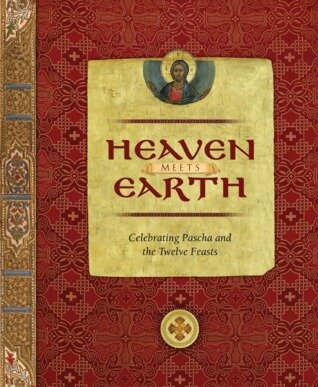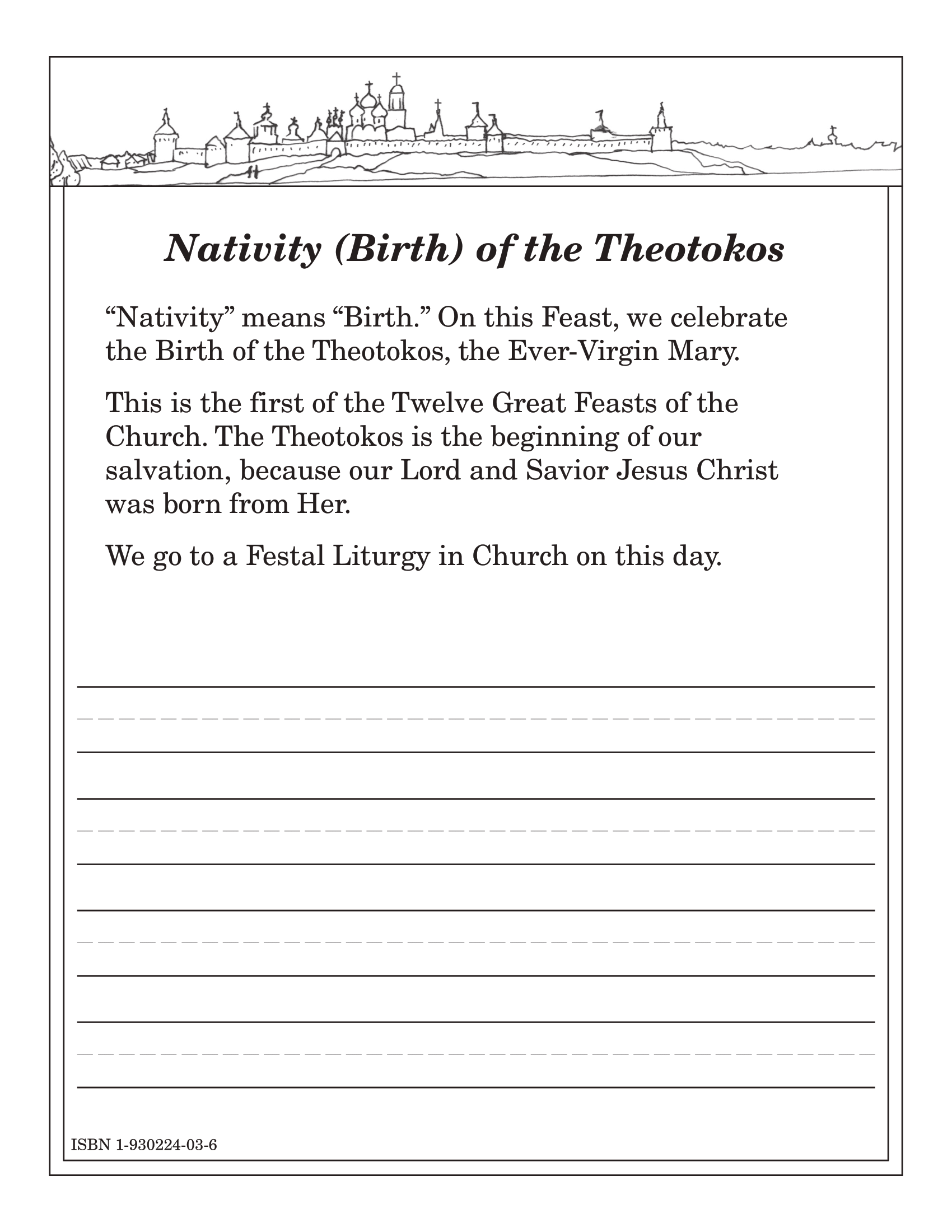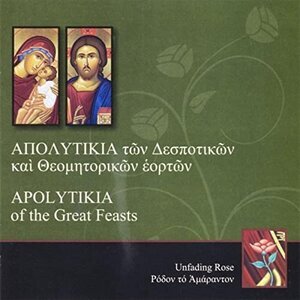Illustrated Synaxarion — September 8
The Illustrated Synaxarion of the Orthodox Church was compiled by Antonios Markou, (MA Ph); "St. Symeon the Translator's" Centre for Hagiographical Studies, Athens, Greece.
The Illustrated Synaxarion of the Orthodox Church was compiled by Antonios Markou, (MA Ph); "St. Symeon the Translator's" Centre for Hagiographical Studies, Athens, Greece. The 1st edition was published in Greek in 2002, and the 2nd edition was published in English in 2004, in Athens, Greece. This publication is no longer in print. If it is reprinted by the copyright holder, all images and pdfs from The Illustrated Synaxarion of the Orthodox Church will be removed from this website and will be replaced by a link to purchase the book from the publisher.
Please see our FAIR USE STATEMENT regarding the posting of the Illustrated Synaxarion.
Hymnography Resources for September 8
Printable Sheet Music and Liturgical Texts:
Saint Anthony’s Greek Orthodox Monastery
Divine Music Project
AGES Initiatives, Inc.
Digital Chant Stand
Audio Recordings of the Hymns for the Feast
chanted by Dimitrios Katsiklis
APOLYTIKION - Nativity of the Theotokos
Fourth Tone
Thy Nativity, O Theotokos, hath proclaimed joy to the whole world; for from thee hath dawned the Sun of Righteousness, Christ our God, annulling the curse and bestowing the blessing, abolishing death and granting us life everlasting.
Kontakion - Nativity of the Theotokos
Fourth Tone
Joachim and Anna were freed from the reproach of childlessness, and Adam and Eve from the corruption of death, O immaculate one, by thy holy Nativity, which thy people, redeemed from the guilt of offenses, celebrate by crying to thee: The barren woman giveth birth to the Theotokos, the nourisher of our life.
Scripture — September 8
Books for Children — September 8
The Illustrated Synaxarion of the Orthodox Church (PDF)
compiled by Antonios Markou
published by St. Symeon the Translator's Centre for Hagiographical Studies
The Great Collection of the Lives of the Saints: September (Volume 1)
written/compiled by St. Demetrius of Rostov
published by Chrysostom Press
distributed by Saint Herman Press
Feasts of Christ and the Theotokos and Miracles of the Lord
Book 1 (in a series of 8)
by Spiritual Fragrance Publishing (2012)
distributed in the US by Archangels Books
Feasts of the Orthodox Church
Anna Larsen
Anna Larsen Books (2013)
Paterikon for Kids #81: Saint Anna, the Grandmother of Christ (English, Greek)
My Book of Church Feasts (English, Greek)
The Life of the Theotokos (English, Greek, Romanian)
My Synaxarion: September (English, Greek)
Orthodox September Package (English, Greek)
Egle-Ekaterine Potamitis
Potamitis Publishing
The Life of the Virgin Mary, the Theotokos
Holy Apostles Convent (1989)
[Middle School & High School]
The Law of God: An Introduction to Orthodox Christianity
Fr. Daniel Sysoev
Daniel Sysoev Inc. (2016)
[High School]
Heaven Meets Earth: Celebrating Pascha and the Twelve Feasts
by John Kosmas Skinas
published by Ancient Faith (2015)
Illustrated Life of the Theotokos for Children
by Georgia and Helen Hronas
published by Light & Life Publishing (1990)
Synaxis of the Kursk Root Icon and Other Icons of the Mother of God
Icons of the Most Holy Theotokos and Ever Virgin Mary and Prayers for Her intercession — Volume One
Published by Icons Plus (2004)
[Fifty icons of the Theotokos. Short historical essay for each icon.]
Icons of the Most Holy Theotokos and Ever Virgin Mary and Prayers for Her intercession — Volume Two
Published by Icons Plus (2010)
[Fifty icons of the Theotokos. Short historical essay for each icon.]
The Wonderworking Kursk Root Icon of the Mother of God Coloring Book
By Mary Naumenko
Published by Holy Trinity Publications (2017)
[feastday: September 8]
Holy Icons of the Panagia #4 - Panagia Tsampika (English, Greek, Russian) [feastday: September 8]
Holy Icons of the Panagia #1, 2, 4, 5, 6 English - Set of five books
Orthodox September Package (English, Greek)
Egle-Ekaterine Potamitis
Potamitis Publishing
Coloring Pages — Nativity of the Theotokos
from Feasts of the Orthodox Church educational coloring book by Anna Larsen
Coloring Pages copyright: © 2013 Anna Larsen Books. All rights reserved. Posted on SaintKosmas.org with permission. Permission is granted to make copies of these coloring pages for non-commercial purposes.
CLICK THE IMAGE TO DOWNLOAD A PDF OF THE COLORING PAGE.
Audios — September 8
Audio Synaxarion
PATRISTIC NECTAR SYNAXARION PROJECT
Log on to Patristic Nectar to hear the Synaxarion reading for any day of the year - for free!
Audio Recordings of the Hymns for the Feast
FREE AUDIO FILES OF THE HYMNS OF THE FEAST
COURTESY OF MASTER CHANTER
DIMITRIOS KATSIKLIS
CDS AND DIGITAL MUSIC FOR PURCHASE
Videos — September 8
Homily On the Birth of Our Most Holy Lady by Elder Ephraim of Vatopaidi
My beloved brethren and Fathers, today is a reason for spiritual joy and exaltation, because today we celebrate the birth of the ever-Virgin Mary, the Mother of God and the most fragrant blossom that ever burgeoned “from the root of Jesse”. We are celebrating the “birth of universal rejoicing”, which is “the doorway to all feasts and the prelude to the mystery of Christ”, according to Saint Andrew of Crete. The birth, which became the agent of the rebirth, remoulding, adornment and renewal of all things. Today, she is born who will bear, in time, in an unintelligible and extraordinary way, God the Word, the Creator and Saviour of the world, Who is outside time and pre-eternal.
All the prefigurements, prototypes and prophecies of the Old Testament refer to her. She is the culmination, the completion of the preparation of humanity in the Old Testament for the reception of God, the incarnate Saviour. The Mother of God is prefigured by the bush, in the unburnt bush* in Moses’ vision, the tablets written by God and the ark of the Law, the heavenly manna and the golden vessel, lamp and table, the rod of Aaron which budded, Jacob’s ladder, Gideon’s fleece, Daniel’s unhewn mountain, the furnace which cooled the Three Children with fire, and the Holy of Holies itself, in the tabernacle of witness. The Mother of God is the watershed between the Old and New Testaments. For the Old she was the preaching of the Prophets, the expectation of the just; while for the New Testament she is the sweetness of the angels, the glory of the apostles, the courage of the martyrs, the delight of the saints, the boast of the human race, which is why she is magnified by “all generations”.
All of creation awaited her birth. Our Most Holy Lady is “the fruit of created things”, according to Saint Nikolaos Kavasilas, that is the point towards which the whole of creation had been tending. As the tree exists for the fruit, so creation exists for the Virgin and the Virgin for Christ. As the Fathers emphasize, it was not only the human race; the heavens and the earth, too, the whole of visible and invisible creation, were created for the all-pure Virgin. When, at the beginning of the ages, God gazed upon His creation and said that it was “very good”, He was, in essence, looking forward to the fruit of all creation, Our Most Holy Lady, the Mother of God, and His praise, in fact, was “commendation of the Virgin”.
On today’s occasion, the whole of creation is blessed by the birth of our undefiled Lady. This “newest creation” was not the best woman on earth, nor even simply the best woman ever, but the only one who was capable of bringing the heavens down to earth, of making God a human person. God the Word, the Creator, made human nature such that, when He needed to be born, He would take on this nature from His mother. God, invisible and unseen for her, now, through her, came to earth and became visible. He was united to and communicated with creation in a more substantial and more conscious way. Through His human nature, He unites the whole of creation in His hypostasis and deifies it. God, Who is without form, beyond description and without a dwelling-place assumes “the form of a servant” (Philip. 2, 7), human flesh, a logical soul; He had dealings with people and walked the earth. He Who was “beyond containment in all things” would be contained in the virgin womb, so that His Most Holy Mother would become the “enclosure of the Unenclosable”.
Today, the barrenness of Ann is undone and she gives birth to “the heirloom for the whole world”, according to the expression of Saint Cyril of Alexandria. God performed a similar miracle several times in the Old Testament, for Sarah, the Patriarch Abraham’s wife, Rebecca, the wife of Isaac, Ann the mother of the Prophet Samuel and Elizabeth, the mother of John the Forerunner. But today’s miracle is very different. It may be that the children of the above mothers, whose long-term sterility was resolved miraculously, were indeed virtuous and holy, but only Mary- the child of Joachim and Ann- was “full of grace” and became- in a manner incomprehensible to both people and angels- the Mother of God.
Our Lady was not born from an immaculate conception, as the Roman Catholics mistakenly believe, but after natural conjugal relations between Joachim and Ann. Ann’s natural sterility was redressed thanks to the direct intervention of God, in answer to the prayers of the righteous forebears. The elderly Joachim and Ann came together without any carnal attraction or pleasure, but only in obedience to God. In this acts of theirs, they set the seal on their restraint. In this way, the Virgin was conceived “in temperance in the belly of Ann, through Joachim”. The fact she was conceived with restraint means that the manner of her conception was pure. But for the Virgin to have been born free of ancestral sin, i.e. to have had an immaculate conception, she would have had to been born of a virgin, as Christ was.
But to acquire such a child, the righteous Forebears showed unflinching faith and unremitting patience. They nourished the hope which does not bring shame, they had great persistence in their prayers and felt sure that God would fulfil their request. And it was not as though they bore their lack of a child for any short time. Tradition tells us that Ann conceived the Mother of God after fifty years of sterility.
Beloved brethren and fathers, this attitude on the part of the Forebears should be an example to all of us. Not only to those lay brothers and sisters who cannot have children, but should not lose hope in God, for “what is impossible for people is possible for Him (cf. Luke, 18, 27), but also to us monks and all the faithful who are “fighting the good fight”.
We often despair or become displeased in our struggle and say we have not had a response, we have no sense of Grace, and are distressed. So, saddened as we are, our zeal withers, and we relax our combativeness, our ascetic effort. But we shouldn’t be like that, my brothers. When God didn’t respond immediately to their prayers, did the Forebears stop entreating him, cease to believe that they would receive, stop knocking, asking and hoping? And what adamantine patience and fortitude they showed for so many years!
In order to experience the spiritual “benefits of great patience”. Saint Isaac the Syrian lived through the withdrawal, the deprivation, of divine Grace, the sorrows of invisible warfare, for thirty years. He received divine Grace permanently after that long period of time of bloody struggle and patience. We mention this specifically for us monks, who have been called upon to receive the fullness of Grace. What’s needed is patience in sorrows, faith in the promises of God, perfect obedience to God’s will and hope “not to lose heart in our prayers” (see Luke 18, 1). God knows when it’s in our interest to give us His inexpressible, inconceivable and invaluable glorifying gifts, His divine Grace as a resident condition. “Spiritual things come by themselves”, Abba Isaiah emphasizes, we don’t arrange them as and when we want.
Often, indeed, before God grants us some blessing, a gift, He tests us with a temptation, the result of which determines whether we prove to be worthy to receive the divine gift. We see this in the holy Forebears, too, who, when the time came for God to give them a child, He arranged to test them even further. It was the feast of the Tabernacles and when they went to the temple to offer their gifts, the high priest, Issachar, upbraided them, saying that they were not worthy to offer gifts to God because they had not given any children to Israel. After this, the Forebears were very sad, but did not give up hope. They had recourse to “prayer from the depths”- Joachim up in the mountains and Ann in the garden- which, in the end, was heard directly, since an angel of the Lord informed each of them separately that conception would place and that a child would be born who would be acclaimed throughout the world.
So we, too, beloved brethren and fathers, should show uncomplaining patience in the sorrows and temptations God grants us for our benefit and spiritual progress. We pray that Our Lady the Mother of God and the Foremother of God, who have the blessing of curing physical sterility, will cure our hearts which are barren of spiritual works, so that God will send to our souls His divine and most sweet Grace, which adorns, renews, and immortalizes people, making them incorrupt.
* A homily of Elder Efraim, which was given in the Refectory of the Monastery of Vatopaidi on the feast of the Birth of the Mother of God, 2002.
* It is important in the Orthodox view of Mary, that the bush was not “burning”; it was in flames but not consumed (Ex. 3, 2) [trans. note].
Message About Additional Orthodox Education Resources
If you are aware of any additional Orthodox education resources for children related to the saints and feastdays for the month of September, please send us the resource name and internet link via our CONTACT US page. Thank you!
Fair Use Statement
This site may contain copyrighted material the use of which has not always been specifically authorized by the copyright owner. We are making such material available in an effort to advance understanding of environmental, political, human rights, economic, democracy, scientific, and social justice issues, etc. We believe this constitutes a ‘fair use’ of any such copyrighted material as provided for in section 107 of the US Copyright Law.
In accordance with Title 17 U.S.C. Section 107, the material on this site is distributed without profit to those who have expressed a prior interest in receiving the included information for research and educational purposes. For more information go to: http://www.law.cornell.edu/uscode/17/107.shtml
If you wish to use copyrighted material from this site for purposes of your own that go beyond ‘fair use’, you must obtain permission from the copyright owner.



















